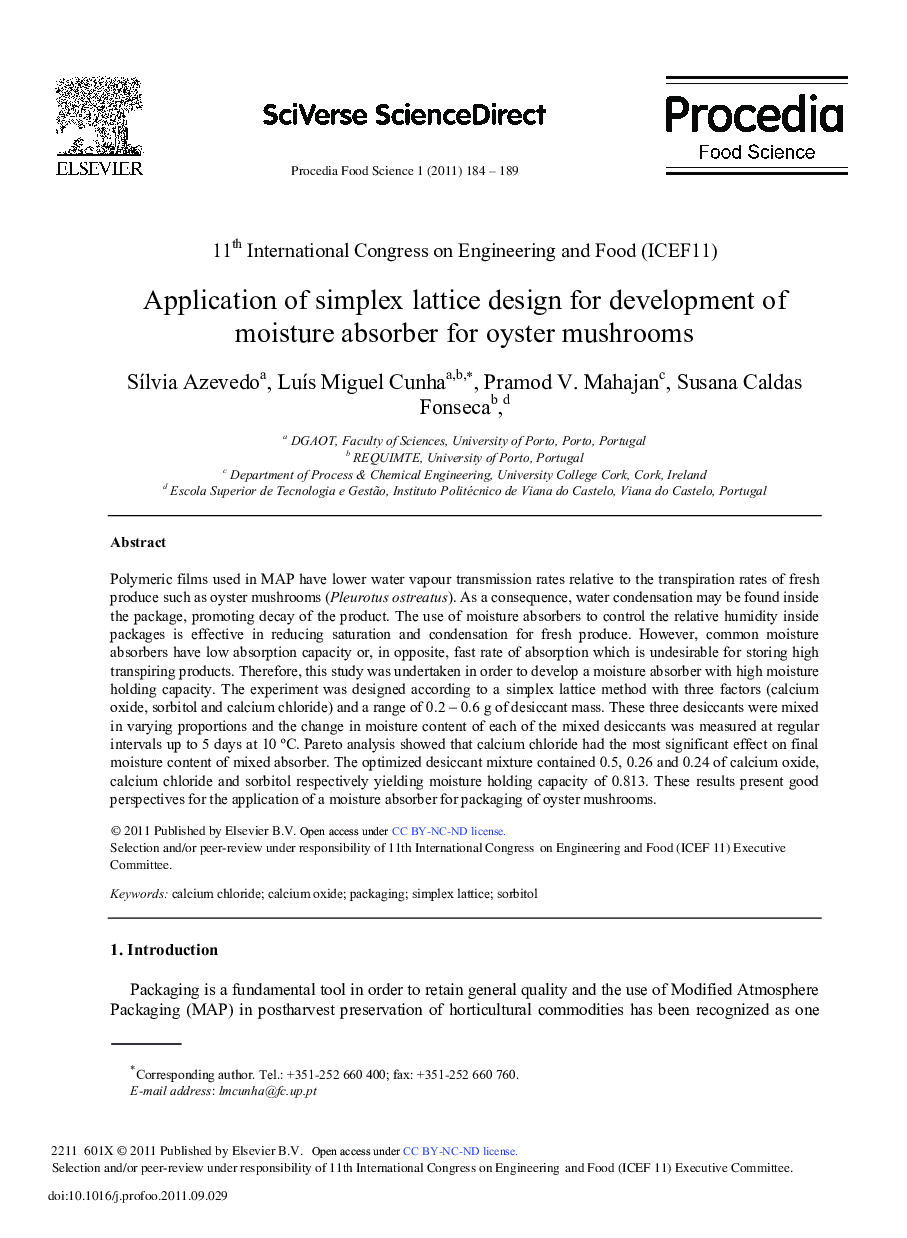| کد مقاله | کد نشریه | سال انتشار | مقاله انگلیسی | نسخه تمام متن |
|---|---|---|---|---|
| 1264937 | 1496855 | 2011 | 6 صفحه PDF | دانلود رایگان |
Polymeric films used in MAP have lower water vapour transmission rates relative to the transpiration rates of fresh produce such as oyster mushrooms (Pleurotus ostreatus). As a consequence, water condensation may be found inside the package, promoting decay of the product. The use of moisture absorbers to control the relative humidity inside packages is effective in reducing saturation and condensation for fresh produce. However, common moisture absorbers have low absorption capacity or, in opposite, fast rate of absorption which is undesirable for storing high transpiring products. Therefore, this study was undertaken in order to develop a moisture absorber with high moisture holding capacity. The experiment was designed according to a simplex lattice method with three factors (calcium oxide, sorbitol and calcium chloride) and a range of 0.2 – 0.6 g of desiccant mass. These three desiccants were mixed in varying proportions and the change in moisture content of each of the mixed desiccants was measured at regular intervals up to 5 days at 10 °C. Pareto analysis showed that calcium chloride had the most significant effect on final moisture content of mixed absorber. The optimized desiccant mixture contained 0.5, 0.26 and 0.24 of calcium oxide, calcium chloride and sorbitol respectively yielding moisture holding capacity of 0.813. These results present good perspectives for the application of a moisture absorber for packaging of oyster mushrooms.
Journal: Procedia Food Science - Volume 1, 2011, Pages 184-189
